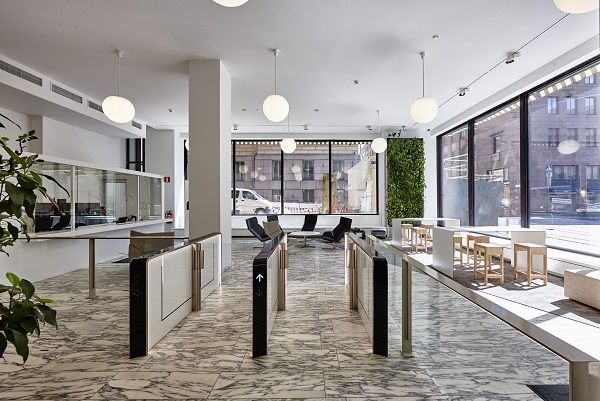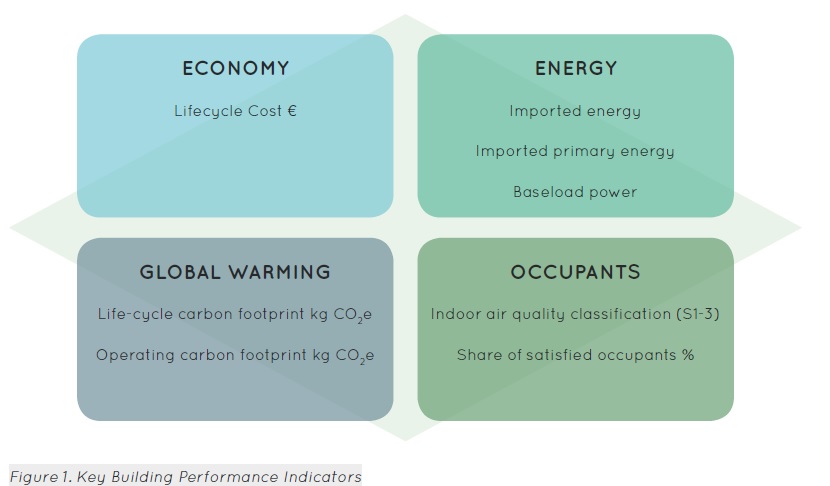Sustainable buildings and construction: much to offer and much to gain
Finland’s Ministry of the Environment has the honour of leading the implementation of the Sustainable Buildings and Construction Programme (SBC) contributing to the 10-Year Framework of Programmes on Sustainable Consumption and Production (10YFP on SCP). The 10YFP is a global framework of action to enhance international cooperation to accelerate the shift towards sustainable consumption and production. It is aimed at developing, replicating and scaling up SCP and resource efficiency initiatives, at national and regional levels, decoupling environmental degradation and resource use from economic growth, and thus increasing the net contribution of economic activities to poverty eradication and social development.

The leadership of Finland in the programme is an indication of our long-term commitment. Before the Johannesburg Summit in 2002, Finland was already actively advocating sustainable consumption and production, both globally and nationally. After the Summit, we led the Marrakesh Task Force on Sustainable Buildings and Construction, aiming at building North–South cooperation and implementing concrete projects at national and regional levels. Our interest in stepping in again now can be seen as an expression of will to complete the unfinished business.
After the adoption of the 10YFP at the Rio+20 Conference, Finland has also contributed to the development and implementation of the 10YFP as a member of its intergovernmental board and by financing its operationalisation worldwide through the dedicated 10YFP Trust Fund.
For the built environment the overall aim of the programme is to achieve the following by 2030: “All stakeholders involved in the planning, commissioning, design, construction, use, management and deconstruction of buildings have a common understanding of sustainable buildings and the knowledge, resources and incentives required to create, maintain and use them; ensuring structures that are healthy to live and work in, that sustainably utilise energy, water, land and other key resources, respecting environmental limits, and that ultimately have a minimally adverse impact on the natural world, while supporting social and economic development.”
The global challenge of a sustainable built environment
Sustainable consumption and production in the context of the built environment can be crystallised as follows: “Sustainable environments are built upon cities that operate climate-smartly, enterprises that produce innovative solutions and people who make sustainable choices. The chain of sustainability is as strong as its weakest link.”
When it comes to the built environment, it is clear that sustainable solutions should be based on national or local conditions, climate, economy and culture. This has not been easy in the European context when promoting common targets and solutions on energy efficiency and greenhouse gas mitigation in the European Union. When the scope is expanded to include the global level, the task becomes even more challenging.
Sustainable solutions should be based on national or local conditions, climate, economy and culture
It is, however, apparent that international cooperation is the key element in solving environmental challenges. Our most severe environmental problems, especially climate change, are worldwide problems. Solutions to these problems are thus often applicable across country borders. This is why close co-operation between nations on environmental issues is crucial.
I believe that most of the practical solutions to mitigate climate change in a sustainable manner already exist. It is now time to find and make good use of them. One should not, of course, neglect the pursuit of better environmental technology and more environmentally beneficial products. That is a competition where everybody wins.
A major task in the 10YFP SBC programme is thus to mainstream the already-existing best practices in sustainable building. Reaching the target of a sustainable built environment calls for actions on all levels of society, that is, on the national, local and even individual level. That is why it is up to national governments and local administration to hold it all together. To do so means having comprehensive, co-ordinated and target-oriented policies on sustainable building.
In Finland the first comprehensive policy for this was the Government Programme for Ecologically Sustainable Building in 1998. In this programme we established a set of measures for pursuing a more environmentally sound built environment. More recently we have done the same in an action programme called ERA17 – for an energy-smart built environment 2017.
The programme started in 2010 and its target year is 2017. It includes an intensive, co-operative and innovative process seeking tools for our future policy toolbox to mitigate climate change. It covers a whole range of measures from town planning to consumer motivation.
In Finland, we have undertaken many initiatives and innovative measures on the built environment that deserve a closer look.
Local commitment – municipalities going carbon-neutral
The so-called HINKU municipalities (HINKU means ‘towards a carbon-neutral municipality’) are at the forefront of regional climate efforts in Finland. The HINKU project was launched in 2008 in five municipalities and has steadily gained new members, amounting to ten in 2013. The HINKU members are committed to reducing emissions by 80 per cent by 2030, compared with 2007.
The HINKU members are committed to reducing emissions by 80 per cent by 2030
Thus far the project has delivered encouraging results. Municipal authorities, business representatives, local residents, research institutes and experts have all been working together to devise new cost-effective solutions to reduce emissions, especially in transport, housing and agriculture. In five years the original five HINKU municipalities have reduced their emissions by 12-18 per cent by replacing fossil fuels with renewable energy and by curbing the use of electricity with more efficient domestic appliances. Besides environmental advantages, the municipalities have created new jobs and gained economic benefits.
In Finland, the entire production and service chain, in cooperation with the public sector, will be encouraged to create and adopt climate-friendly solutions and technological innovations. For example, Finland’s cleantech expertise will be strengthened by steering public procurement and by developing instruments for risk financing, while municipalities will take on the role of pioneers in the work. Policies aimed at reducing the use of private cars through, for example, land use planning, public transport networks and new solutions for enhancing bicycle use, will be advanced.
Core performance indicators of the Green Building Council Finland
Methods for assessing environmentally sustainable construction have been a key tool in promoting sustainable construction since the 1990s. They offer a handy way of controlling the complex interrelations of environmental impacts of buildings. For the users, the main challenge with all the tools has been the large number of qualities needing to be assessed.
To solve this challenge the Green Building Council Finland developed the Building Performance Indicators that can be used to show actual building performance with simple, easy-to-read key indicators. Eight indicators were developed with the help of broad cooperation with the real estate and construction industries, and they are based on the European CEN/TC 350 family of standards. These eight indicators are: e-value, lifecycle carbon footprint, lifecycle cost, indoor air class, measured energy consumption, operational carbon footprint, baseload demand, and user satisfaction.

These indicators can be used to support an organisation’s strategy, operations management and public relations. The set forms a transparent, coherent way of assessing the environmental efficiency of a property and ensuring that working methods truly follow sustainable development principles. To ensure the best results with earlier work, the indicators are compatible with many existing statutory and voluntary tools for assessing environmental efficiency.
The Building Performance Indicators are a suitable tool for the pre-design and occupancy phases of a building, offering a consistent approach to monitoring, managing and developing properties. Their practicality, helpfulness and quality have already been tested on several projects and buildings, with great user satisfaction. The indicators are suitable for anyone working in the industry and are free to use by all.
The Green Building Council Finland also provides a free web tool, the Building Passport, which presents the indicators. The aim is that this web tool will provide a baseline for the sustainable performance of Finland’s building stock. From the web tool it is already possible to notice how the energy performance of different types of buildings differs according to the purpose and use of a building. (http://figbc.fi/en/building-performance-indicators/)
The Ministry of the Environment – leading by example
In most European countries at the moment, the foremost task in sustainable construction is improving the energy efficiency of the existing building stock. In Finland we have a massive renovation era ahead of us which concerns facades of and repair of pipes in post-war residential blocks of flats. One of the guiding principles in promoting sustainable construction in Finland has been the idea that the public sector should set an example. This is the case for the new premises of the Ministry of the Environment in Helsinki. These premises give a good example of energy-efficient refurbishment of an office building.
The Ministry of the Environment’s targets for their new office building included a high level of sustainability in all its operations. It was also decided that the premises should be made more suitable in terms of usability and size. The new office premises are located in a building constructed in 1932 in a very central location formerly used by the University of Helsinki.
This building was fully renovated. The ministry, which continues to have the same responsibilities as before, now occupies 40 per cent less office space. The energy efficiency of the old building was also improved by 40 per cent, thus reaching the standard of new buildings.
Performance indicators of the Green Building Council Finland helped to set the targets for energy efficiency
In the design phase the building performance indicators of the Green Building Council Finland helped to set the targets for energy efficiency, indoor air classification, humidity control, good acoustic planning, smart office design and the use of renewable energy sources. The energy consumption is also measured and monitored online.
In conclusion
These cases from Finland are examples of good practices of a sustainable built environment that may also find fertile soil in other countries and regions. I am sure that cases like these can be found in all countries around the world. Our common task is to make sure that we import and export all the best ideas and practices across borders. The 10YFP Sustainable Buildings and Construction Programme provides a topical channel for this.
Given that the most critical environmental problems such as climate change are international by nature it is easy to agree with the message included in the recent development of the Sustainable Development Goals: “Leave no one behind.”








